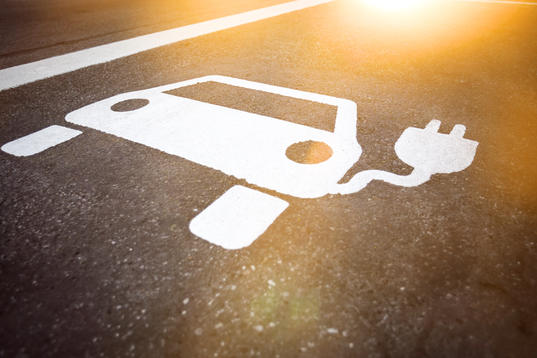India's net zero goal for 2070 clearly indicates the intent to pursue decarbonisation by committing an economy to a 1 billion tonne reduction in projected carbon emissions by 2030. While this provides a clear path for India to follow, the inter-sectoral contributions of states, industry and businesses will be critical in achieving this goal.
One of the primary sources of emissions in India is the transportation industry. To meet the net zero target, India must make this sector its priority. Without immediate electrification of vehicle fleets, transport-related emissions would skyrocket by 2050, playing a compelling part in accelerating climate change. To develop an EV ecosystem in India, critical interventions such as the following, are the need of the hour,
- Charging infrastructure for corporate parks and national highways
- Renewable energy powered EV charging
- Medium and long-haul freight along with the electrification of last-mile deliveries
Governments in action: Increasing policy support
The Indian government has set the stage to rapidly scale electric mobility adoption in the country. Purchase discounts across several vehicle segments, reduced road taxes, scrapping and retrofit incentives are a smart mix to encourage achieving the goal of 30% EVs by 2030. India's recent policies to accelerate the transition to e-mobility are motivated by the burden of oil imports, rising pollution and its global commitments to address climate change.
1. Faster Adoption and Manufacturing of Hybrid and Electric Vehicles (FAME II) – Demand incentives
As of November 2021, around 160,000 EVs had been incentivised under FAME II through demand incentives of 75 million USD. The incentive scheme has approved 6,300+ e-buses, 2,870+ EV charging stations in 68 cities, and 1,576 charging stations on nine expressways and 16 highways. It has the potential to accelerate the uptake of electric two-wheelers, three-wheelers and e-buses across the country.
2. Production-linked incentive (PLI) Scheme
In May 2021, a 2.4 billion USD PLI scheme for Advanced chemistry cell (ACC) storage manufacturing was announced by the Indian government to establish a local manufacturing capacity of 50-gigawatt hours (GWh) of ACC and 5 GWh of ‘niche’ ACC capacity. This would minimise reliance on imports, build capacity and localise the EV supply chain. Major Indian businesses including Reliance, Hyundai, Ola and M&M have shown an overwhelming response by bidding for about 130 GWh.
Furthermore, in September 2021, the central government authorised 3.4 billion USD for auto and auto components to stimulate the manufacture of electric and hydrogen fuel cell vehicles.
3. State EV policies
Several states have introduced EV-specific policies. On the supply-side, incentives include:
- Capital interest subsidy
- Stamp duty reimbursements
- Tax exemptions
- States goods and services tax (SGST) reimbursement
- Provision of interest-free loans to incentivise EV manufacturers
On the demand side, there are monetary incentives, road tax and registration fee exemption.
The Delhi and Maharashtra governments have announced policies to accelerate the adoption of EVs. By 2024, 25% of all new vehicle registrations are to be accounted for by EVs in Delhi. And in the case of Maharashtra, 10% of all new vehicle registrations will be EVs by 2025.
Businesses leading the way: Ambition and action
Many incumbent automotive lead-acid battery manufacturers, such as Amara Raja Batteries, and Exide are leading in directing new investments into green technologies, including lithium-ion batteries. Business leaders like OLA Electric, Ather Energy and Mahindra Electric are rapidly expanding their market presence in response to the opportunity presented by India's EV industry.
- Ather Energy aims to produce 1 million electric scooters a year as demand soars
- Ola “Future Factory” invested 2 billion USD to manufacture 10 million electric scooters per year
- Tata Motors has a newly formed EV subsidiary TPEML, to manufacture, design and develop services related to EVs
- Hero Electric has partnered with Mahindra Group to build over 1 million electric two-wheelers per year
Furthermore, EV100 members, committed to 100% EV transition by 2030, are leading on the demand side.
- Flipkart has partnered with Hero Electric, Mahindra Electric and Piaggio to accelerate the transition to EVs in the last-mile delivery space
- Dalmia Cement launched its e-trucks initiative, with plans to deploy 22 electric trucks in 2022
- JSW Group has a new EV policy to facilitate incentives up to 300,000 USD for employees to purchase electric four-wheelers or electric two-wheelers
While government and businesses now recognise the massive upside to adopting EVs, yet more needs to be done to accelerate a faster transition to EVs in India. The Indian corporate sector has a critical role to play in driving demand and adoption of clean transport. They are also in an advantageous position to inspire new business models, effectively revolutionising dated systems.
Initiatives like EV100 are advancing the frontiers to create a facilitative environment to transition to e-mobility by raising EV demand, influencing policy and pushing mainstream adoption to make electric transport the new normal by 2030. As India's electricity grid gets greener and new solutions to procure clean electricity emerge, the emissions reduction potential of EVs will improve even further.
